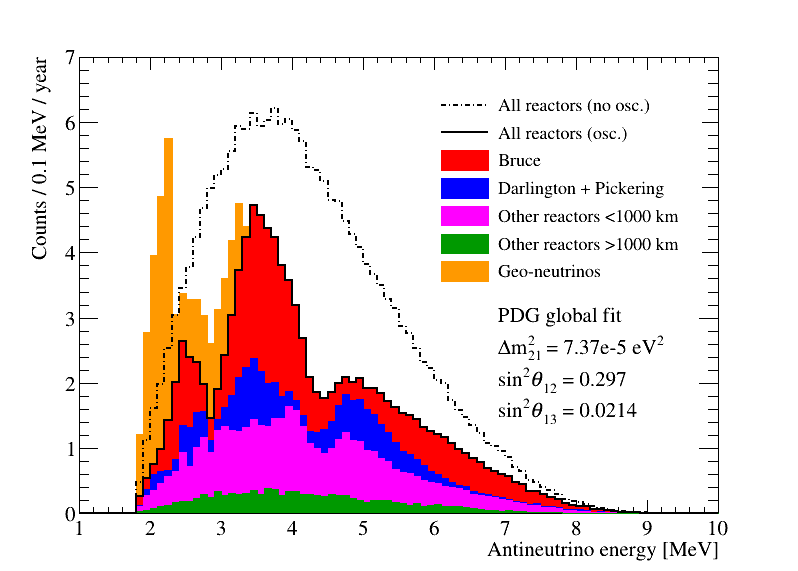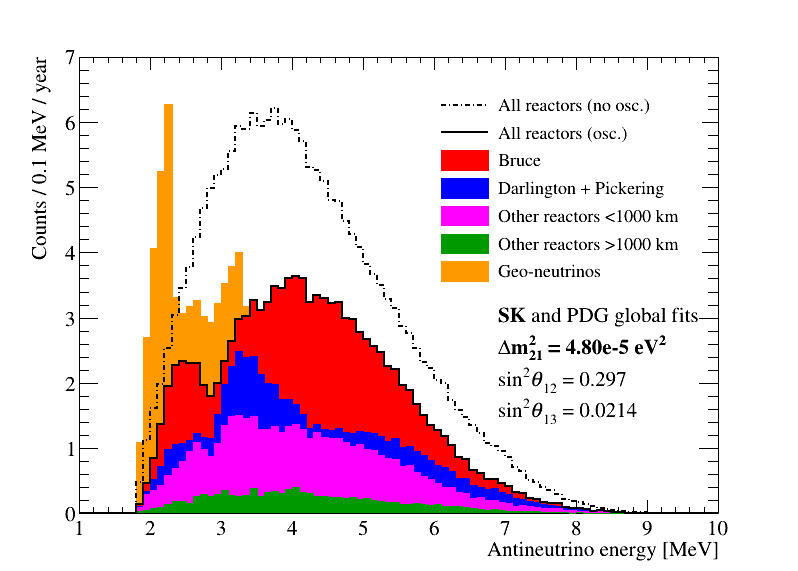Science Programme
The SNO+ Experiment is used to investigate a large suite of physics phenomena.
Find out more about our current active research interests here.
Reactor Neutrinos
Nuclear reactors used for power generation produce enormous numbers of electron anti-neutrinos (typically > 1020 every second) from the beta decays of the fission products. The flux of reactor anti-neutrinos can be accurately calculated from the number of decays, which is related to the measured thermal power produced by each reactor. The precise shape of the anti-neutrino energy spectrum depends on the well known nuclear composition of the fuel used for each reactor. The precise yield and well defined energy spectrum from anti-neutrinos produced a known distance from the detector makes reactor anti-neutrinos very powerful tools to study neutrino oscillations.
Recent measurements of neutrino oscillation parameters from the KamLAND collaboration has produced the most precise measurement to date of Δm221, one of the parameters used to describe neutrino oscillations. Currently, this measurement is in tension with the value obtained using solar neutrinos on experiments such as SNO and Super-Kamiokande. A measurement of reactor neutrinos using the SNO+ experiment may help to resolve this discrepency.
In scintillator experiments, electron anti-neutrinos (ν̄e) are detected through the inverse beta decay reaction with protons (p):
Anti-neutrinos propagate (and therefore oscillate); a fraction of the electron anti-neutrinos produced in the nuclear reactors will change into muon or tau anti-neutrinos, which are not detected. For a fixed distance, the probability that a neutrino oscillates depends on its energy. Thus, the energy spectrum of electron anti-neutrinos observed at the detector differs significantly from the spectrum at production. The expected SNO+ reactor anti-neutrino spectrum (compared with a no-oscillation scenario) is shown belowfor osctillation parameters that agree with solar experiments (left) or KamLAND (right).

